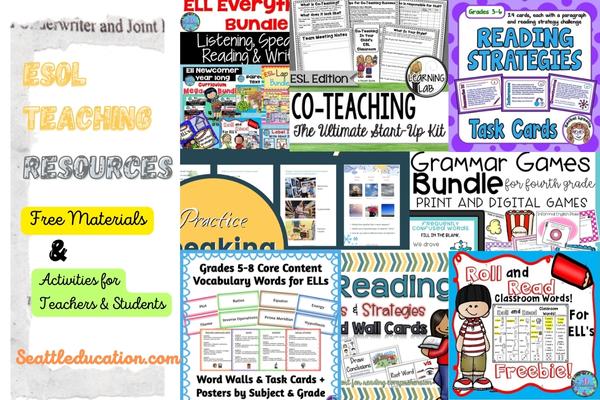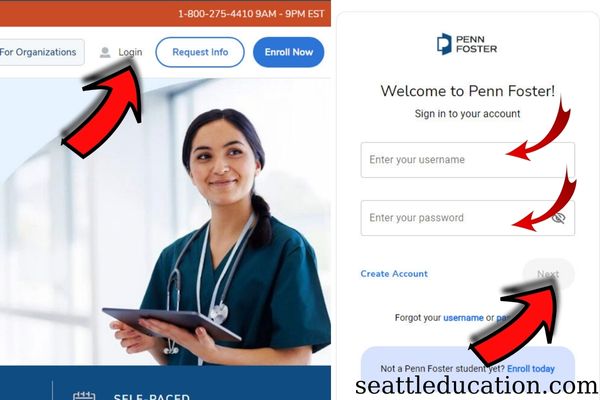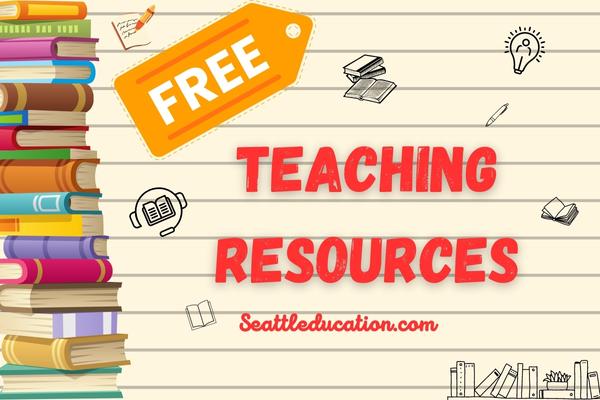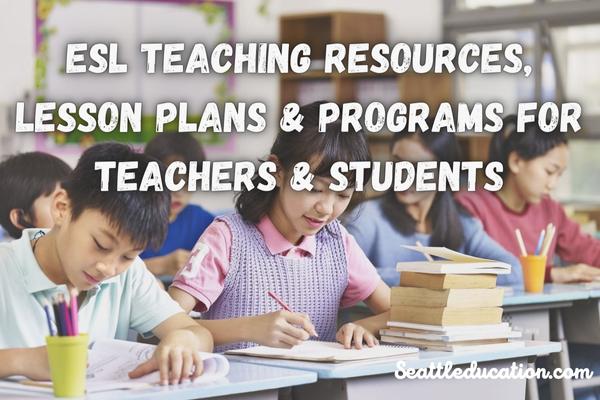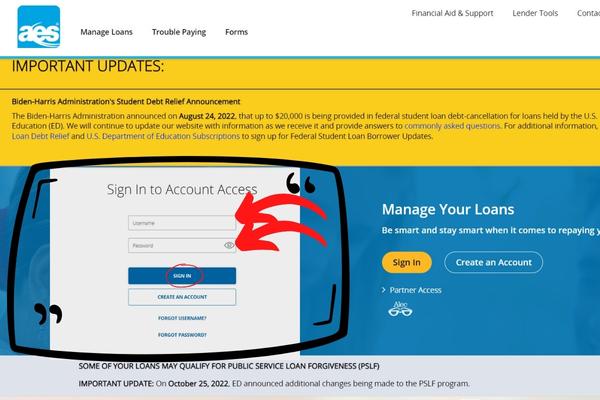ESOL Teaching Resources: Free Materials & Activities for Teachers & Students
ESOL teaching resources play a critical role in helping students who are learning English as a second language. These resources are designed to assist both students and teachers in the acquisition of the English language. In this blog on Seattleducation, we’ll explore some of the best assets available for ESL teachers and learners, including sites and tools that offer engaging lessons and activities to help students develop their language skills.
What is ESOL?
The term ESOL is short for “English for Speakers of Other Languages.” It pertains to courses and programs intended to educate individuals who do not have English as their primary language on how to speak English.
ESOL is commonly used interchangeably with ESL (English as a Second Language), EFL (English as a Foreign Language), and ELL (English Language Learner), all of which allude to the same meaning; the instruction of English to people who have different native languages.
ESOL programs aim to enhance the students’ English skills in reading, writing, listening, and speaking. Such programs can prioritize various language learning elements, such as pronunciation, vocabulary, and grammar, and can be customized to match different proficiency levels, ranging from introductory to advanced.
It is important because English is a widely used language in many parts of the world, particularly in business and academia. Knowing English can help individuals to communicate effectively, access educational opportunities, and succeed in the global economy.
Difference Between ESOL & ESL
ESOL and ESL are words used to describe programs and courses meant to teach non-native speakers of English. Although the names are frequently used interchangeably, they are distinct in several ways.
English for Speakers of Other Languages refers to programs given in the United Kingdom, Australia, and New Zealand that aim to improve the listening, speaking, reading, and writing skills of non-native English speakers. These projects focus specifically to immigrants, refugees, and international students that lack English proficiency.
In the United States and Canada, English as a Second Language, typically shortened as ESL teaching, is a widely used term. These programs are largely intended to improve the language abilities of international students and immigrants. Typically, they offer instruction in topics such as grammar, pronunciation, vocabulary, and conversational English, with a focus on actual language usage.
Types of ESOL Teaching Resources For Students & Teachers
Free ESOL/ESL Materials
Gratis ESOL/ESL metals are a wonderful asset for all levels of English language students. These resources are very beneficial for ESL/ELL students, including English language pupils. ESL websites and other online assets provide ESL teachers and English teachers with a choice of lesson ideas and classroom activities.
Several of these items are intended expressly to meet the needs of ESL students, and include grade-specific ESL exercises, newcomer activities, and metals for students with varying skill levels. English students can strengthen their language skills and find success in their academic and personal endeavors with the aid of free ESOL/ESL tools.
ESOL Lesson Planning Materials
ESOL lesson planning metals are essential for teachers who are preparing lessons for English language students. These materials provide a structured framework for teaching language skills and include various activities and exercises that cater to the needs of students.
Lesson planning metals typically cover essential language components such as grammar, vocabulary, reading, writing, listening, and speaking. They may also include culturally responsive content that helps pupils connect with the language and understand its usage in different contexts.
Teachers can use these metals to plan engaging and effective lessons that target the specific needs and abilities of their students. Well-designed lesson planning metals can make the teaching and learning process more efficient and enjoyable for both teachers and students.
Teaching Resources for Teachers
For teachers to effectively instruct non-native English speakers, they must have access to assets. With the growth of technology, numerous websites and mobile applications have evolved to provide teachers with interactive and interesting supplemental metals for classroom instruction.
These metals address several components of language learning, such as grammar, vocabulary, listening, and reading, which are essential for the development of students’ language ability.
Popular ESOL-teaching websites and applications include Duolingo, Quizlet, Kahoot!, Lingoda, and ESL Library. These metals provide a variety of games, exercises, and quizzes that cater to various learning styles and skill levels, making it easier for teachers to design engaging and effective courses.
Teaching Resources for Students
ESOL learners can benefit from the following websites and mobile applications:
- Duolingo: Duolingo is a free resource for students interested in gamifying their language acquisition. It includes several linguistic skills, from grammatical understanding to vocab expansion to improved listening and reading comprehension.
- BBC Learning English: The resources on BBC are extensive, and they are all free of charge to anyone who wants to improve their English. Movies, articles, and quizzes are only some of the content types it offers, and they target a wide range of linguistic competences.
- Quizlet: Quizlet is an online learning platform that provides students with a variety of study tools. It provides flashcards, quizzes, and games for vocab and grammar development.
- ESLgold.com: ESLgold.com is a website that provides English language pupils with a variety of tools. It contains lessons on English grammar, vocab lists, reading and listening exercises, and interactive quizzes.
- Memrise: Memrise is an application for language learning that provides students with dynamic learning experiences. It incorporates a variety of language skills, including grammar, vocab, and listening, and provides gamified tasks to make learning enjoyable.
These materials provide students with a variety of methods for practicing and enhancing their language abilities. By downloading these tools, students can improve their English ability and attain their language learning objectives.
Teaching Resources for Parents
Without the proper metals, it might be difficult for parents to facilitate their child’s education at home. Yet, there are a variety of teaching tools accessible to assist parents in enhancing their children’s English language skills.
These metals include online games, collaborative activities, and language – learning resources that can make learning E enjoyable and participatory. In addition, there are numerous books and audio metals that parents may utilize to help their children improve their English reading and listening skills.
Additional tools include language exchange programs, podcasts for language learning, and online forums where parents can connect with other parents supporting their children’s education. By employing these tools, parents can assist their children in acquiring excellent English language skills and achieving academic and social success.
ESOL Resources for Professional Development
In order to effectively help their students, instructors must improve their teaching abilities and knowledge in order to meet the rising global demand for English competence. Teachers of English to SOLs have access to a plethora of substances for enhancing their teaching approaches and staying up on the newest advances in the field.
Here are some additional substances that instructors can explore to improve their teaching skills:
- English Language Learners – Online Course (Harvard University)
- Teaching English to Speakers of Other Languages (TESOL) Certification (American TESOL Institute)
- ESOL Professional Development Webinars (TESOL International Association)
- Understanding Language: Learning and Teaching (Stanford University)
- Teaching EFL/ESL Reading: A Task-Based Approach (Coursera)
- Teaching Grammar Communicatively (American English)
- English Language Teaching Online (British Council)
- ELT Conference Calendar (English Agenda)
For Classroom Activities
Interactive activities are particularly effective in promoting language development, as they encourage active participation, communication, and collaboration among students. With the right resources and collaborative activities, instructors can create a dynamic and stimulating learning environment that supports the language development of all their students.
- Board games that focus on vocab, grammar, or pronunciation.
- Group projects such as creating a presentation or brochure on a specific topic.
- Role plays that simulate real-life situations such as ordering food at a restaurant or booking a hotel room.
- Interactive storytelling activities that involve sequencing and retelling events.
- Scavenger hunts that encourage students to use their language skills to find clues and complete tasks.
- Debate or discussion groups that encourage critical thinking and the use of higher-level language.
- Collaborative writing projects such as writing a story or poem as a group.
- Online games and collaborative websites that provide additional language practice outside of the classroom.
- Pair or small group speaking activities that promote conversation and fluency.
- Classroom simulations that immerse students in real-life situations, such as a job interview or traveling abroad.
For Business English
Learning business English setting involves specialized resources that emphasize vocab and communication skills particular to the industry. These substances assist students acquire the language and communication skills necessary for success in a professional setting.
Some essential resources for teaching ESOL in a business setting include:
- Textbooks such as “English for Business Communication” by Simon Sweeney and “Business Vocabulary in Use” by Bill Mascull.
- Online resources such as the British Council’s “Business English” website and the “ESOL Courses” website provide lesson plans and substances that cover a range of topics, from job interviews to making presentations.
- Business-related podcasts like “The Economist” and “HBR IdeaCast” can also help pupils improve their listening and comprehension skills in a business context.
- Additionally, using authentic business substances such as company reports and news articles can provide students with exposure to real-world language use and professional communication styles.
For Test Preparation
Teachers of English to SOL face the problem of preparing their students for high-stakes exams such as the TOEFL, TOEIC, and IELTS. The good news is that there are numerous instructional substances accessible to assist instructors in preparing their pupils for these examinations. These substances consist of textbooks, practice exams, audio and video substances, and online courses.
The Official Guide to the TOEFL Test, Barron’s TOEIC Test, and IELTS Practice Tests Plus are three popular textbooks for test preparation.
Moreover, online tools such as EnglishCentral, Quizlet, and Khan Academy can be beneficial to language students.
In addition, many language schools and colleges provide test preparation classes that can assist students in developing the necessary skills to pass these exams.
For Cultural Competence
Creating an inclusive learning environment in which all students feel respected and supported requires ESOL resources for cultural competency. It is necessary to recognize and comprehend cultural differences and to provide resources that foster cultural competence and sensitivity.
These resources should include teachings on customs, traditions, and social norms that assist students better comprehend different cultures and facilitate dialogue and engagement with people from various backgrounds.
Textbooks, films, podcasts, and online resources, such as the British Council’s Teaching English website and the American TESOL Institute, are examples of teaching substances for cultural competency and sensitivity.
In addition, cultural activities and guest lecturers can provide useful insights into different cultures and help pupils acquire cultural competence. By utilizing these tools, instructors can establish a culturally responsive classroom that promotes mutual respect and understanding among ESOL students from various backgrounds.
For Technology Integration
Students’ learning experiences can be considerably enhanced by incorporating technology into instruction, allowing for more dynamic and interesting courses. There are various online tools, applications, and software available to assist instructors in integrating technology into their classrooms.
Language-learning applications such as Duolingo and Babbel, online dictionaries and translation tools such as Google Translate and WordReference, and language-exchange networks such as Tandem and HelloTalk are examples of these resources.
In addition, numerous classroom management software and learning materials, such as Edmodo, Kahoot, and Quizlet, can be utilized to facilitate group work and evaluation.
Using technology into instruction can contribute to the development of a more dynamic and effective learning environment for pupils.
Conclusion
In conclusion, free ESOL teaching resources play a crucial role in facilitating effective English language learning for non-native speakers. Well-designed resources help learners overcome language barriers and improve their confidence and communication skills, leading to better academic and professional opportunities.
Visit our site, Seattleducation.com, for more useful information. Thanks for reading!
Maybe you’ll like:

